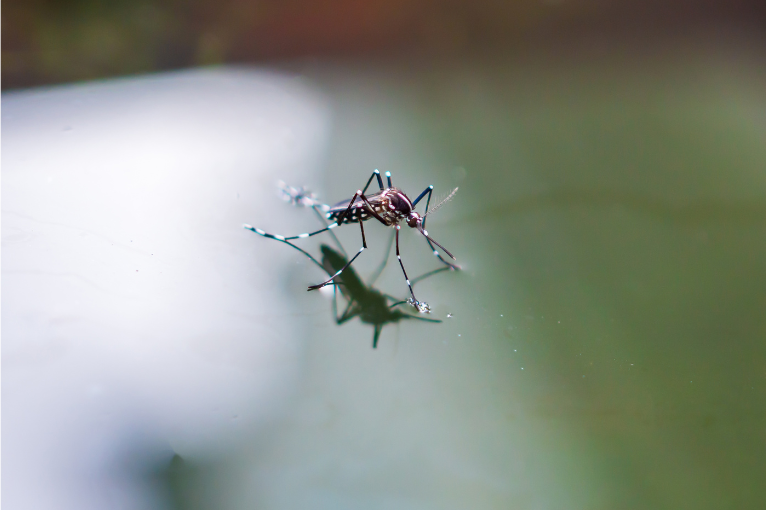From Mosquitoes to Monitoring: How The Kraken Can Assist in Early Detection of Rift Valley Fever
A new outbreak of Rift Valley fever (RVF) is sweeping across Mauritania and Senegal, with over 400 confirmed human cases and 42 deaths since late September 2025 (WHO,2025) — and thousands of livestock affected. While Rift Valley fever isn’t new to Africa, its frequency, geographic reach, and human toll are escalating, driven by environmental change and gaps in early detection.
What Is Rift Valley Fever?
Rift Valley fever virus (RVFV) is a vector-borne zoonotic disease in the Phlebovirus genus, family Phenuiviridae. It was first discovered in Kenya in 1931, when mass abortions and deaths in sheep signaled a new animal pathogen that could also infect humans.
The virus has a segmented RNA genome, meaning it can reassort and evolve quickly, similar to influenza viruses. This flexibility allows new strains to emerge in response to climate and vector shifts—especially as mosquito habitats expand (Lapa et al., 2024).
How It Spreads
RVF primarily spreads via mosquito bites—especially Aedes and Culex species—but humans can also become infected through:
Direct contact with infected animal blood or tissues
Inhalation of aerosols from infected fluids
Consumption of raw or unpasteurized milk
Exposure to contaminated water or runoff from infected livestock areas
Outbreaks often follow periods of heavy rain or flooding, which create ideal mosquito breeding conditions and allow viral particles to persist in stagnant or organic-rich water. Once the virus infects mosquito eggs (a process called transovarial transmission), it can survive long dry seasons, re-emerging when water returns.
What Happens in the Human Body
After infection, there’s a 2- to 6-day incubation period. Most cases are mild, presenting as flu-like illness—fever, fatigue, back pain, and light sensitivity. But for about 10% of patients, the disease becomes severe:
Ocular form: inflammation of the retina leading to blurred vision or blindness
Meningoencephalitis: brain inflammation causing confusion, seizures, or coma
Hemorrhagic form: internal bleeding and liver failure, with fatality rates up to 50%
RVFV primarily infects liver cells, triggering massive inflammation and cell death. The immune system responds with type I interferons and T-cell activation, but in severe cases, the virus suppresses protein-level immune signaling—leading to uncontrolled viral replication and hemorrhage (Lapa et al., 2024).
A Quick Look at the Immune Response
The immune system’s defense hinges on neutralizing antibodies targeting the viral glycoproteins Gn and Gc. These antibodies block the virus from entering host cells and are crucial for long-term protection. However, antibodies against the internal nucleoprotein (N) are non-neutralizing—they signal infection but don’t stop it
This makes early detection and vaccination in livestock the first line of defense—before human exposure ever occurs.
Rift Valley Fever and Water’s Role
RVF is often thought of as a mosquito problem, but water is the true amplifier.
Flooded pastures and stagnant ponds serve as nurseries for Aedes eggs, while livestock waste introduces viral particles into runoff and wastewater. Studies have shown that viral RNA fragments can persist in animal effluent and environmental water sources, especially when organic load is high and disinfection is inadequate .
That’s where biosurveillance becomes essential: monitoring the microbial and viral genome signals in water before they reach people or livestock.
How Kraken Sense Fits In
Kraken Sense’s autonomous pathogen detection technology can screen for viral genomes like RVFV directly from environmental water, wastewater, or agricultural runoff—continuously, in real-time.
By integrating genomic sequencing and AI-driven pattern recognition, Kraken systems can:
Detect RVFV genetic material in mosquito breeding sites, irrigation channels, or slaughterhouse effluent
Alert authorities when mosquito-borne viral signals spike, days or weeks before human symptoms appear
Provide early-warning data for public-health, veterinary, and environmental agencies
With these insights, public-health agencies can deploy vector control, vaccination, and awareness campaigns before outbreaks spread beyond containment.
The Takeaway
Rift Valley fever reminds us that outbreaks don’t start in people—they start in the environment.
By bringing genomic detection to the source, Kraken Sense helps close the gap between infection and intervention—keeping communities, industries, and water systems safer.

